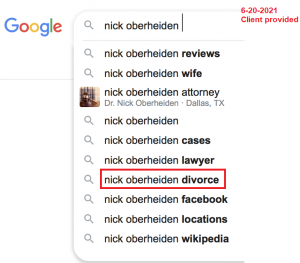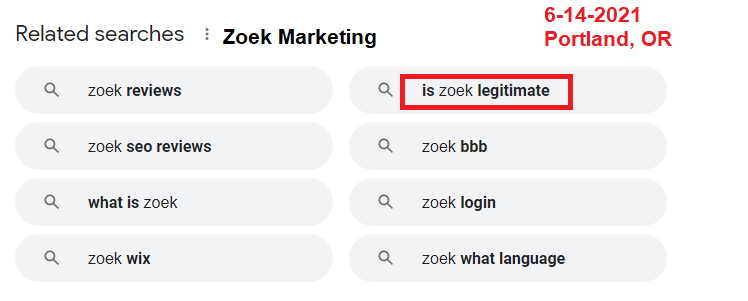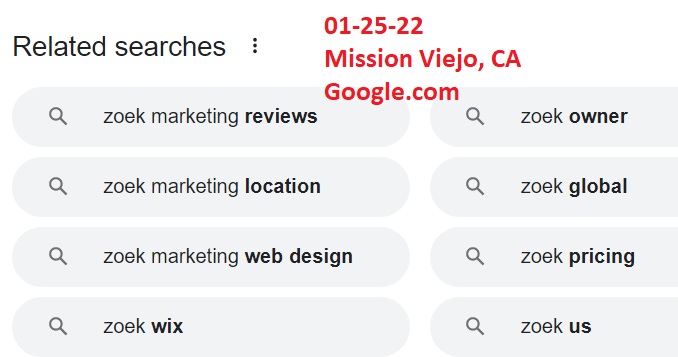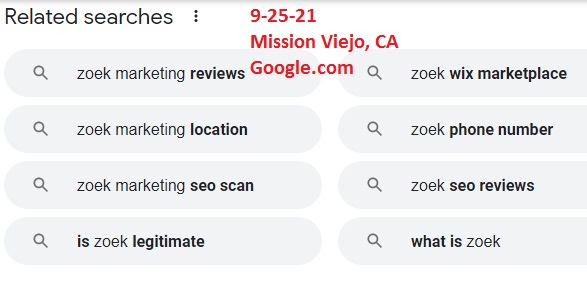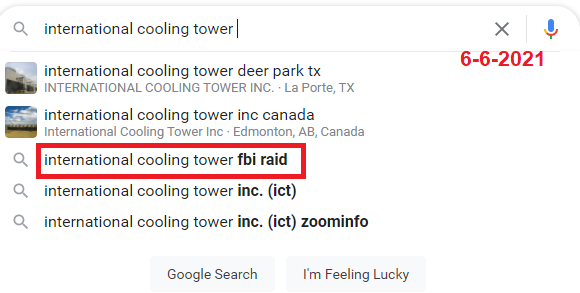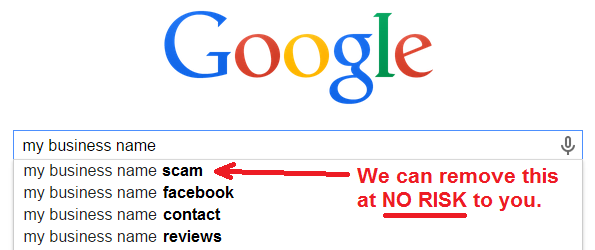You may have noticed that manipulating Google Autocomplete is a lot harder than it used to be. In the “old days,” all you had to do was load your positive search terms into Mechanical Turk, wait for the algorithm to refresh and voila! You’re negative suggestions were gone and replaced with the new positive ones.
Reputation management firms like mine and others offered 100% guaranteed results and made a nice profit with very little personal time involved.
But all of that changed in July 2014. That’s when Google began tweaking its search suggestion algorithm to keep people like me from changing it so easily.
Over the last year, our case load dropped, along with our certainty of being able to clean up a client’s unwanted suggestions. Instead of a 100% success rate, we were only successful between 50-75% of the time.
In checking with other reputation management firms, they were experiencing the same problems. Some firms stopped offering the service, others referred their clients out, and other firms went to a “content+search activity” model that was a lot more expensive and only marginally more effective.
In the cases we were successful in fixing, I have to be honest: we didn’t always know what it was we were doing that was fixing the case, because we usually didn’t see our suggestions replacing the negative ones. A colleague and I theorized that simply “shaking the tree” was enough to get negative suggestions pushed out – even if the new suggestions weren’t the ones we were creating search activity for.
Success Again
But I recently saw that change.
In July 2015, for the first time in a year, we saw the exact terms we were searching appear as suggestions for our clients. It didn’t take long to discover that the clients who saw these changes were the clients whose keywords were being searched entirely by our private network of real people.
So, for now, at least, that’s the secret sauce.
If you want to change Google Autocomplete suggestions, build a private network of people and have them do the searches for you. Don’t spend a lot of time and money on content – search activity, in my opinion – has always trumped content as the factor which most influences the suggestions we see.
Having already spilled the beans on how to fix autocomplete, here are some reasons why your autocomplete campaign might not be working as you’d hoped.
Reasons (Theories) Why You Can’t Change Google Autocomplete
1) Too much search activity. Back in January of 2014 when Justin Bieber was arrested, within hours, we saw suggestions like mugshot, jail, prison, and arrest after his name in Google autocomplete. Within a week, the negative suggestions were gone as the story died down.
I’ve heard of the same thing happening to reputation management clients. In the haste to create a positive solution, the firm handling the account will spike search activity so high to try to get a quick result. And while they get the result, it doesn’t stick very long.
I feel the principle is the same as in the Justin Bieber case. If you want new keyword suggestions to remain visible over the long haul, you’ve got to ramp up search activity at levels that are reasonable to your keyword.
For most clients, the volume for their negative suggestion is low, <20 searches per month according to Google’s keyword planner. Doing 1,000 searches for a set of new keywords just isn’t going to stick.
2) You’re using overseas workers. Sites like Mechanical Turk and Microworkers let you setup a task and get them done for pennies. It’s cheaper to hire workers in Bangladesh then it is in the United States, so there’s higher profit in hiring overseas workers to create your searches.
It used to work. It doesn’t work reliably anymore. If you want to change Google.com, you’ve got to use American workers.
3) You (or your workers) are using proxies. Proxy switching services like HideMyAss used to be excellent for creating the search activity that changed Google autocomplete for three reasons:
- I could hire overseas workers to perform the searches (costs less)
- I could geo-target locations (great for clients with problems in local markets)
- No consecutive searches on the same IP (looks more natural)
Proxy services used to work; they don’t anymore. In June of 2015, we completed a test case for a client using HideMyAss exclusively to try to push out unwanted suggestions his company had in two specific markets. It didn’t work and confirmed our prior research from June 2014.
And even though crowdsource sites like Mechanical Turk and Microworkers allow you to select US workers for your jobs, those sites don’t do a good job of screening who actually lives in the United States vs. who is using a US proxy. So, if your searches are being done by someone using a proxy, they might not count and your autocomplete campaign won’t be successful.
4) You’ve tripped a “consecutive search” filter. This is a theory, based on my experience and what I’ve seen. (Why else would our campaigns on crowdsource sites not work?)
Maybe Google has an algorithmic filter that says, “If we see 20 searches in a row from one computer, we’re going to mark that as suspicious and not count any more searches from him/her, for fear of possible manipulation.”
Google loves to fix things algorithmically, so this makes sense. It sees 20 consecutive searches (or 50 in a row or 100 in a day) and a filter is tripped. Those searches don’t count and no other searches from that computer count for [six months, one year, life].
This adds even more weight to why our campaigns running on MTurk and Microworkers are ineffective. You can imagine workers there doing search after search after search. It’s rhythm work and it’s easy. Do too many in a row, trip a filter, and you’re paying workers to do searches that don’t count.
This theory is further reinforced by the ineffectiveness of running autocomplete campaigns on one of the largest crowdsource platforms in the world – CrowdFlower. CrowdFlower has relationships with hundreds of small crowdsource and gaming sites, so that when your job is posted on CF, it gets farmed out to other sites to be completed.
You would think this diversity in workforce would yield better results, but I have one colleague who runs his jobs on CrowdFlower with mixed results. So, either the workers on all of these smaller sites are using proxies or their IPs have been blocked.
One thing is for certain: Something is going on that is causing autocomplete campaigns on public crowdsource sites to be less effective.
5) Suggestions are frozen. This is a theory, too, and its one I heard through the grapevine from a client.
I’ve seen a few cases where no matter what we do, the suggestions don’t change. We’re testing this theory on a client right now with our private network to see if we can get the suggestions to change. If they don’t, we’ll conclude that this particular client’s suggestions are frozen for some time period.
6) Suggestions are different in different markets. For companies with multiple offices and lots of search volume, it’s common for Google to show different suggestions in different markets. A client with a problem in Houston is not going to get fixed unless people in Houston make the searches. While you might get lucky and see changes based on sheer volume, it’s unlikely that you’ll be successful.
Microworkers lets you target workers at the state level, but it’s hard to accumulate volume and impossible to know if your specific DMA is being hit with search activity (ie, you target California hoping to hit Los Angeles, but workers are spread out across the state, so it’s hard to get the needed volume in the Los Angeles DMA). Proxies allow you to target certain citites, but most proxies don’t work anymore.
We fixed a client once who had a problem ONLY in Minneapolis. In order to fix it, we had to run ads on Craigslist to find the people to do the work. It was a management nightmare and cost a lot of money per search. In the end, we were successful, but didn’t make any money on the campaign due to the high costs of running such a city-specific campaign.
Trying to change suggestions for a client in a specific city is possible, but much more expensive due to the high costs of recruiting the market and paying the workers.
If you have problems in a market that aren’t being fixed, it’s probably because you aren’t getting enough search activity from people on real computers who actually live in that market.
Conclusion
I could’ve titled this article, “6 Reasons Why You Should Create A Private Network To Fix Google Autocomplete Campaigns” because at the end of the day, that’s what it’s all about.
I’m convinced that having a private network to create search activity is still the best way to effect the suggestions in Google Autocomplete.
There are many positives to creating your own private network, such as:
- You know workers are US-based
- You have some control over the # of searches per day
- Workers most likely not using proxies
Of course the biggest positive is right now we’re relying on the private network to fix the majority of our cases and we’re having more success than we have had in the last 12 months.
While it’s still not a guaranteed solution, we’re feeling good about our chances as compared to using the traditional method of crowdsourcing and the expensive method of content development.
If you operate a reputation management firm and want to send your clients to us, we offer a whitelabel service you can package and price as you like. Good luck with your campaign!
